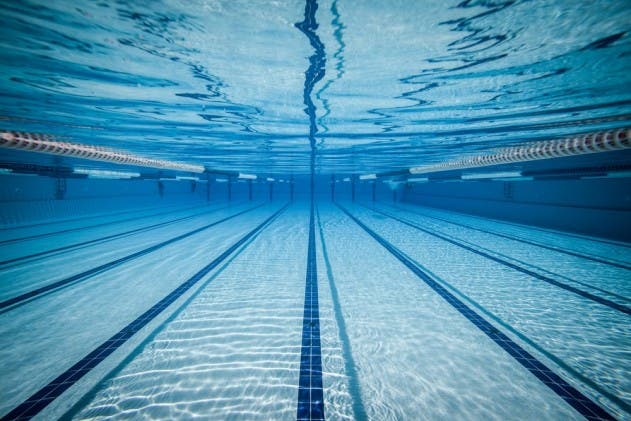Injured? Give Deep Water Running A Try

Photo: <a href=http://shutterstock.com>Shutterstock.com</a>
 If you’re injured, it can speed recovery. If you’re healthy, it can boost your speed. Here’s why to give deep water running a try.
If you’re injured, it can speed recovery. If you’re healthy, it can boost your speed. Here’s why to give deep water running a try.
Water running gets a bad rap as aqua aerobics by a different name. But with proper technique, it makes for a tough workout and is a perfect training tool if you’re injured or need variety. You’re working with high resistance (think about it: water is thicker than air) without any pounding on your joints.
“If you’re injured from running, swimming won’t quite give you that fix,” says Robert Valentin, a New York City-based Deep Water Running coach for 15 years. “If your form is right, you’ll feel like you went running afterward.”
Valentin adapted his technique from his mentor, the late Doug Stern. By working with your leg almost straight and toes pointed, you can gain the most resistance from the water.

The Form
Legs: Start with straight legs. Point your toes like a ballet dancer and sweep legs back and forth, using your upper thigh to create the movement. Keep hips under your shoulders.
Arms: Put your arms gently by your sides, palms facing backward, elbows slightly bent. Let your thumb graze your thigh as it swings. Don’t cross the mid-line.
Head and eyes: Look straight ahead with your jaw relaxed. Feel as if a string is supporting your head above your shoulders.
Shoulders and chest: Press your shoulders back and slightly down. They should be loose and relaxed. Press your chest forward and up for easier breathing.

The Strides
Power walking: Keep arms and legs straight and picture yourself cross-country skiing. Your arms touch the surface on the swing.
Hurdles: “Run” over hurdles alternating the lead leg. Reach forward with each arm as if you were trying to touch your lead foot. This exercise is great for increasing range of motion in the hip flexors and hamstrings.
Uphill: Exaggerate the back swing of the elbows as you use your upper body to add power. Lift knees slightly more than in a regular run, and visualize running up a hill.
Downhill: Narrow your stride, lean forward slightly and increase your cadence. It should resemble vertical kicking in swimming.

The Workouts
After a short warm-up, try 30 minutes of one of these workouts.
Intervals: Do a 3:1 ratio of hard intervals/recovery. Try three minutes fast, 60 seconds recovery.
Fartlek (speed play): Replicate a familiar running course using all the different forms for climbing hills, racing other runners or jumping over curbs.
Progressive speed: Count your cadence for 15 seconds. Then run for three minutes. Each minute, increase your cadence by one or two strides. Rest for one minute and repeat.

The Gear
Hydrofit Wave Belt Pro
$59.95 Hydrofit.com
The Wave Belt adjusts to fit sizes S–XL. Athletes with low body fat—hey there, triathletes—can buy an Extra Buoyancy Module ($12.95).
AquaJogger Buoyancy Belt
$50.95 Aquajogger.com
The AquaJogger comes in a variety of sizes (from wider-waisted to on-the-road). Adjust the strap below your rib cage for a slightly “too tight” fit.
Need an added challenge? Both companies make “ankle weights,” in the form of Hydrofit Mini Cuffs ($39.95) and AquaRunners RX ($30.95).